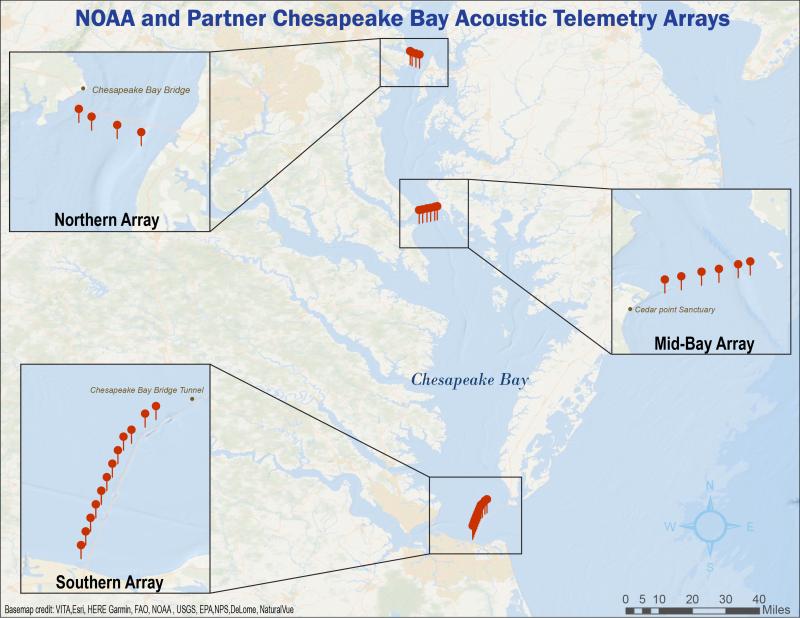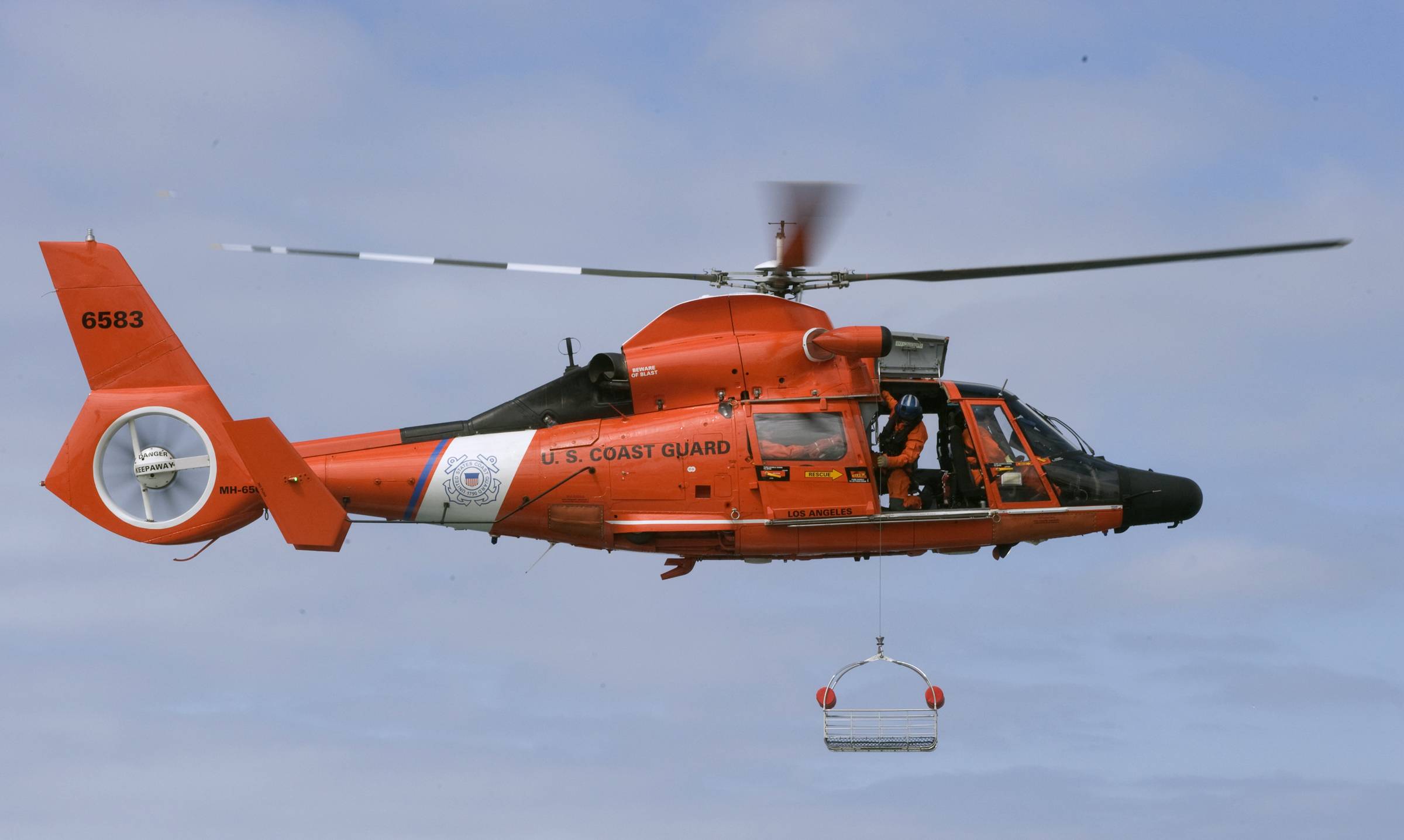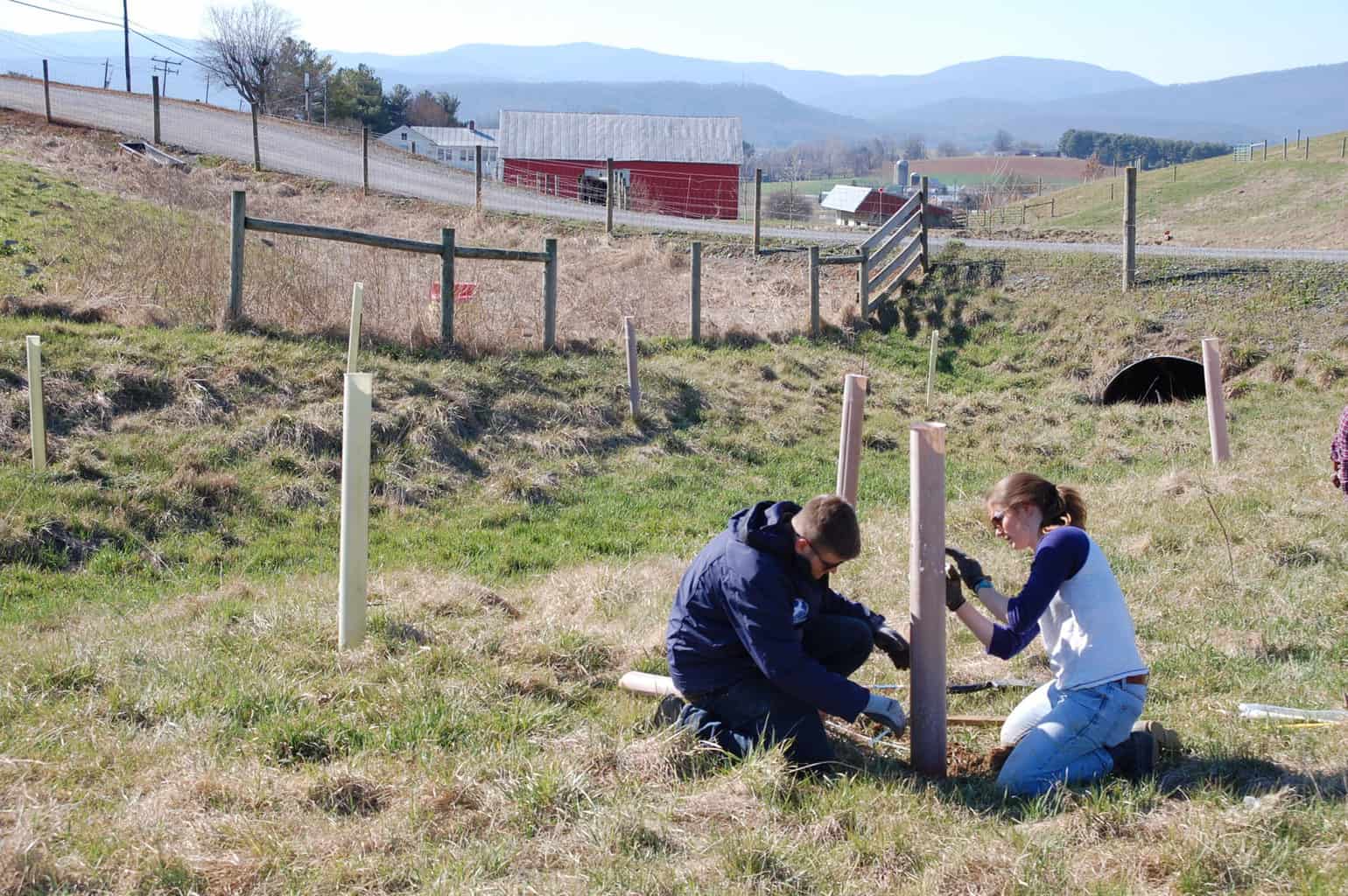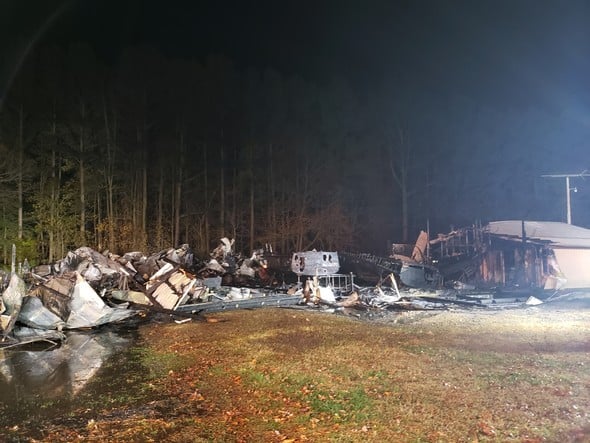A clever piece of technology is allowing scientists to tag fish and then study their movements up and down the Bay. And after just one season in use, they already have useful data on more than 3,800 individual fish.
It’s called acoustic telemetry. The technology is similar to electronic toll collection systems for cars and trucks. Receivers anchored in the Bay’s bottom (toll plazas, if you will) can “hear” a tagged fish from up to a kilometer away. A small computer in the receiver logs information about when it “heard” the fish. NOAA has installed more than two dozen of these receivers up and down the Bay.
“Telemetry allows fish to tell their own stories,” said Dr. David Secor. A professor at the University of Maryland Center for Environmental Science (UMCES), he studies endangered Atlantic sturgeon, especially the ways in which they travel to Delmarva’s Nanticoke River/Marshyhope Creek system, the only Maryland waterway in which we know they spawn.
Dr. Secor and other scientists periodically download the receiver’s accumulated data. “Knowing Chesapeake mainstem corridors for migrations by this endangered species could inform issues pertaining to influence of climate on spawning run behaviors, vessel strike threats, and assessment of spawning run sizes in recovery plans for the species,” he notes. Dr. Matt Balazik of Virginia Commonwealth University (VCU) also uses the technology to track sturgeon from Virginia’s three known spawning rivers (the James, Pamunkey, and Rappahannock).

Dr. Secor studies rockfish (striped bass) too. Here telemetry helps strengthen the overall database the Atlantic States Marine Fisheries Commission (ASMFC) uses to help restore this immensely valuable but currently depleted species. In addition, Dr. Secor explains, “Telemetry of migratory fishes moving through offshore wind lease areas will inform managers on risks of turbine construction impacts.”
The Chesapeake holds several sets of telemetry receivers. A Northern Array includes four receivers anchored near the Chesapeake Bay Bridge by Annapolis. It’s funded by the Chesapeake Bay Office of the National Oceanic and Atmospheric Administration (NOAA NCBO), in partnership with the Maryland Department of Natural Resources (MD DNR). A Mid-Bay Array includes six receivers near the mouth of the Patuxent River, managed by UMCES. A Southern Array sets twelve receivers across the Bay’s mouth off Virginia Beach. NCBO funds it too, working in partnership with the Virginia Marine Resources Commission (VMRC). All five buoys currently deployed in NOAA’s Chesapeake Bay Interpretive Buoy System (CBIBS) hold receivers in addition to their water quality sensors. Thus they help fish researchers correlate water temperature, salinity, dissolved oxygen, and other conditions that each tagged fish experiences near a CBIBS buoy. Finally, UMCES has placed three receivers in the Choptank River near oyster restoration projects. These receivers, on loan from NOAA Fisheries’ Northeast Fisheries Science Center, will help scientists learn more about how fish use restored oyster reefs.
In fact, there are buoy arrays up and down our Atlantic coast, and fish tagged in the Chesapeake frequently turn up in other areas, especially our sturgeon and rockfish. Coordination between areas of the coast is critical to getting maximum value out of the technology. Enter the Mid-Atlantic Acoustic Telemetry Observing System (MATOS), with data managed by the Smithsonian Environmental Research Center Even though the Chesapeake’s arrays have been in the water for less than a year, they have seen lots of action. Between March and October 2021, the array at the Chesapeake’s mouth recorded 3,824 “hits” of identifiable, tagged fish of six different species involved in 14 separate research projects. Learning more about fish migrations helps us understand their life cycles and how the species interact. It also helps us manage them sustainably.
-John Page Williams



